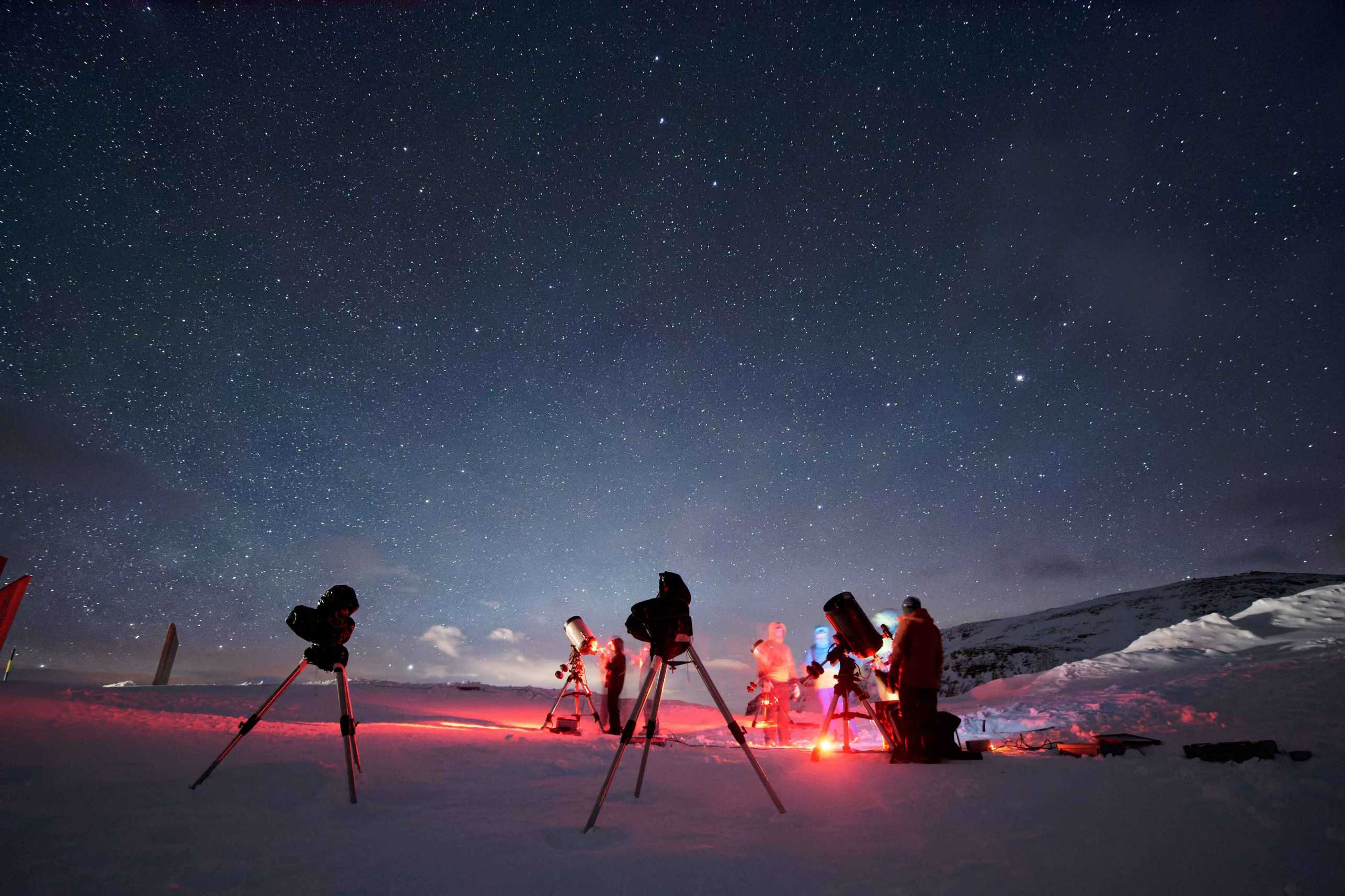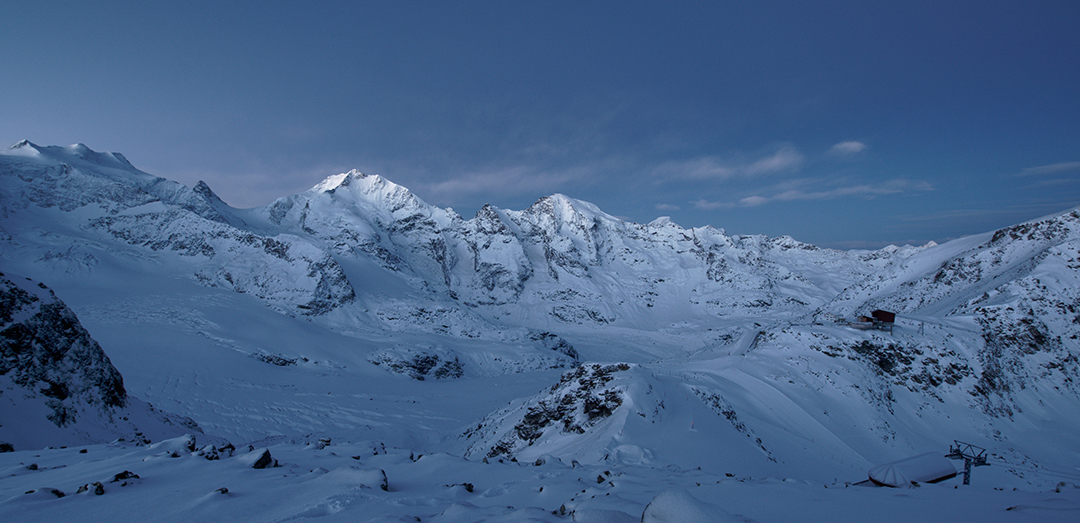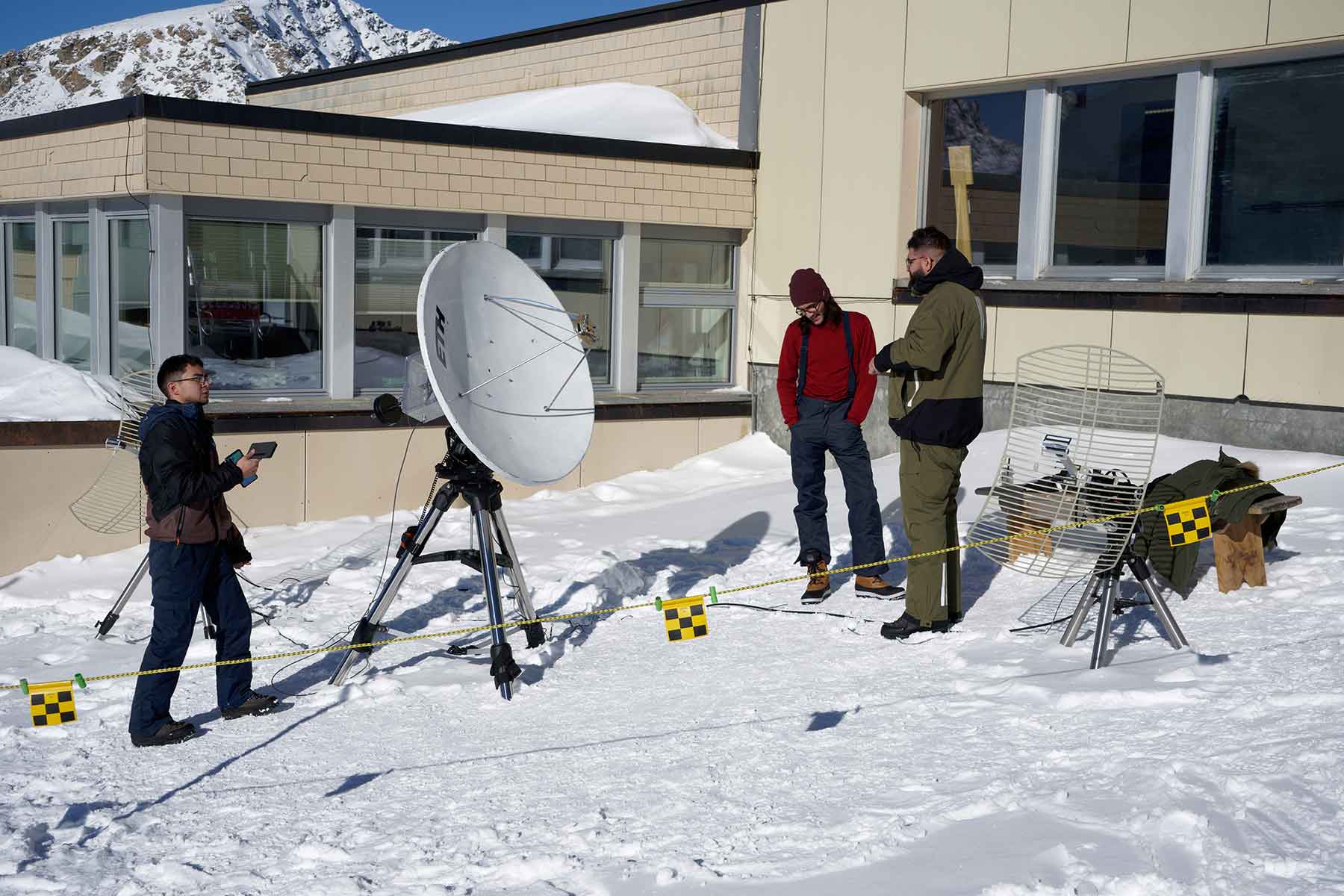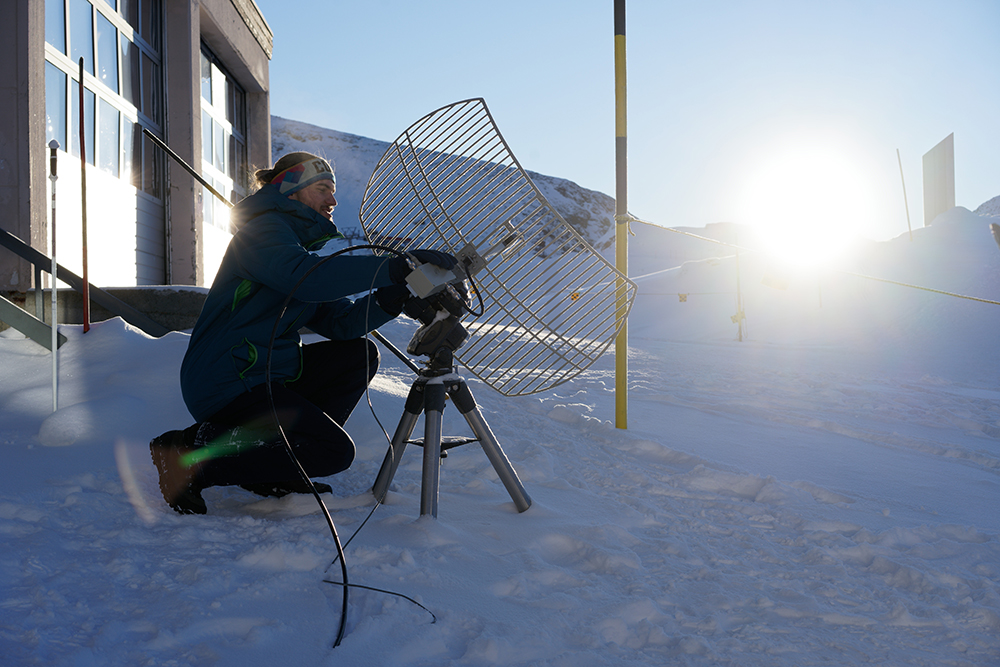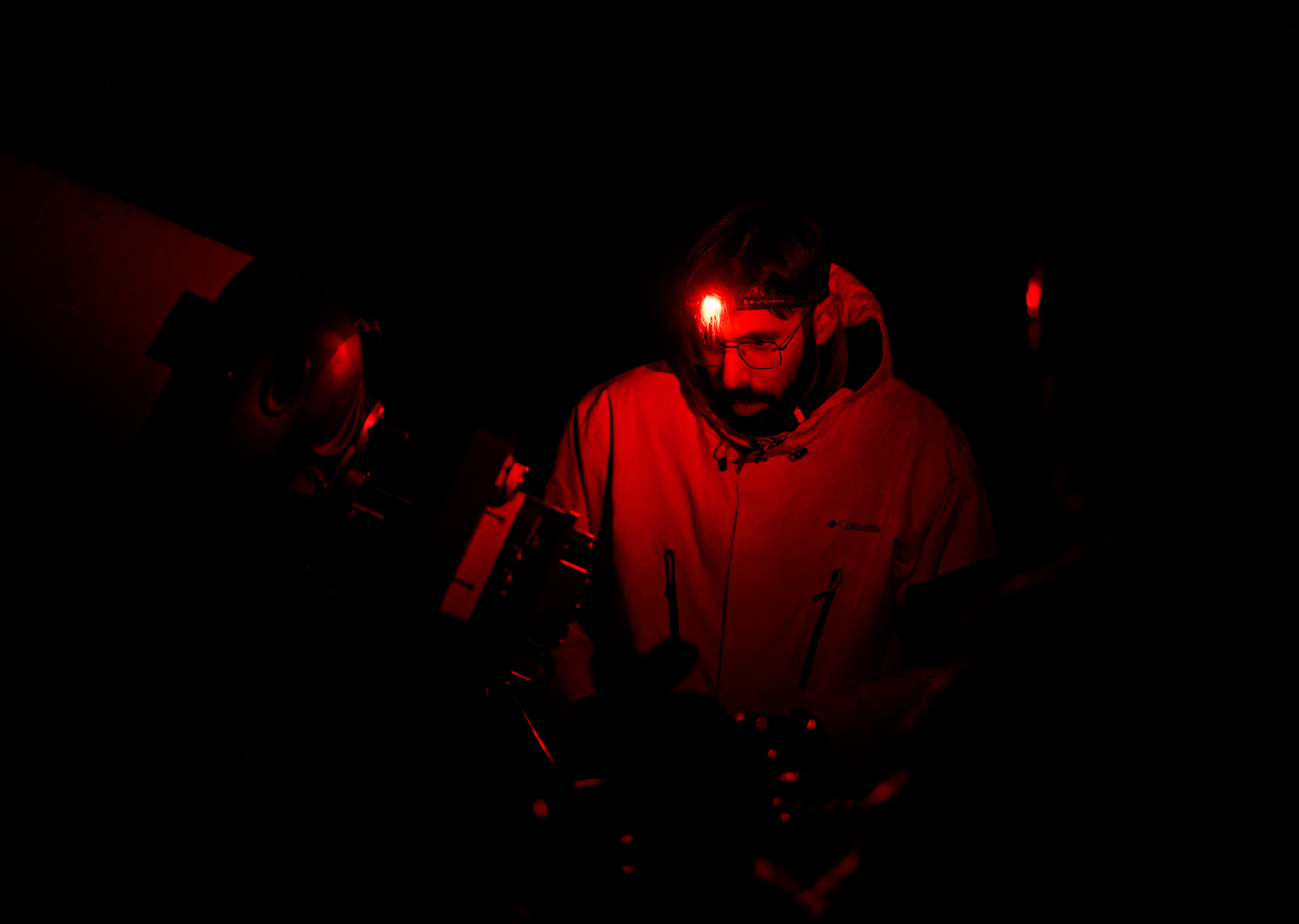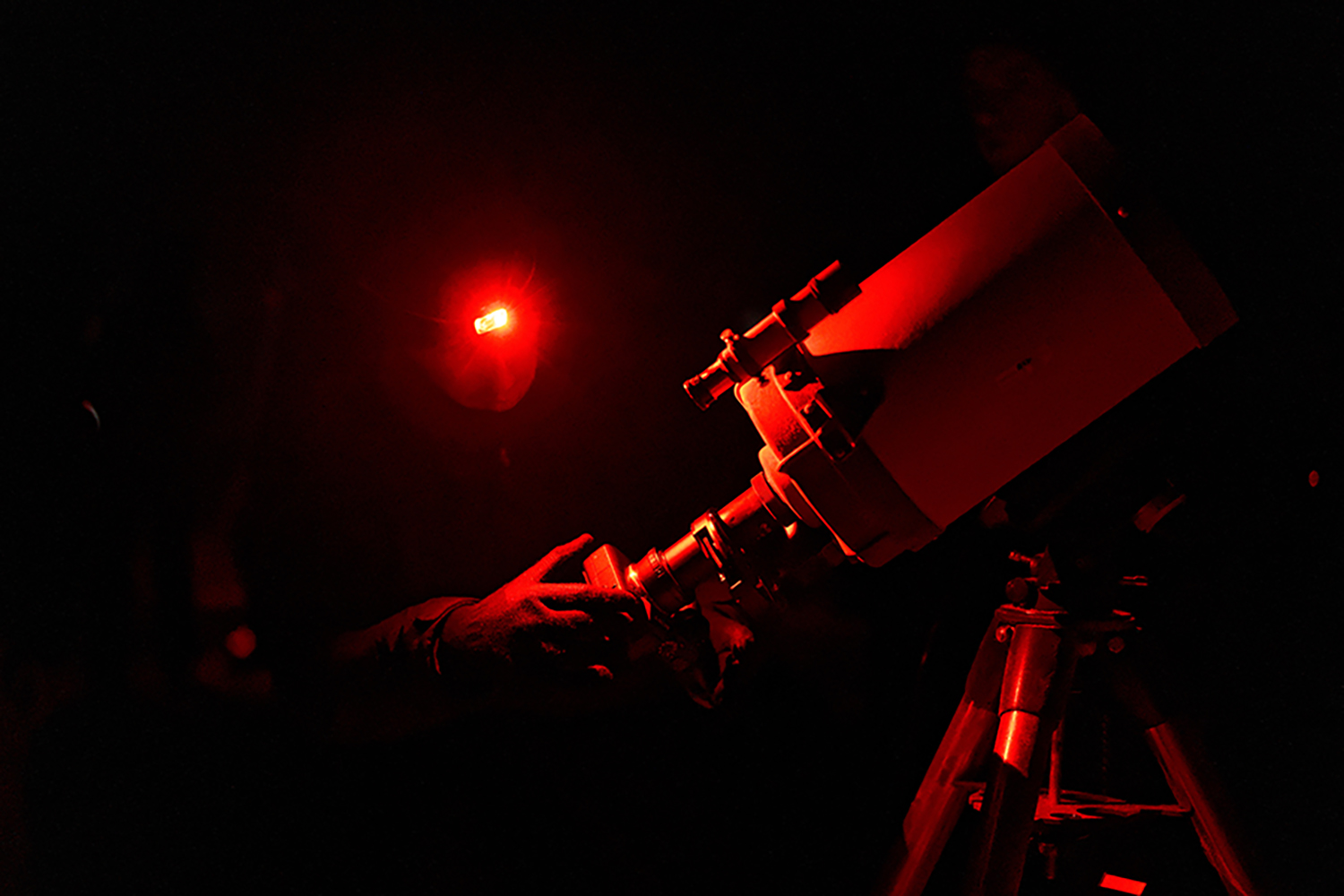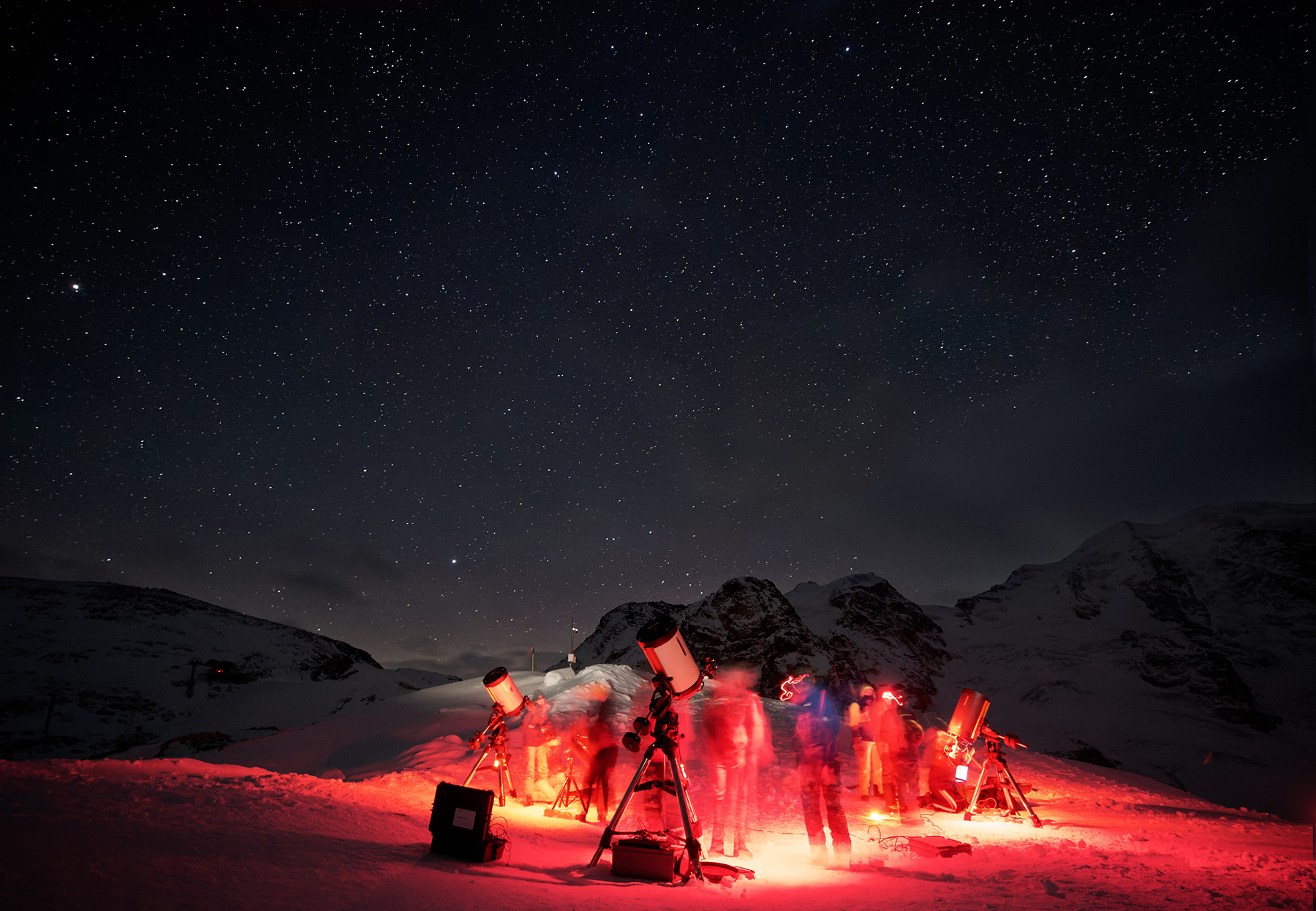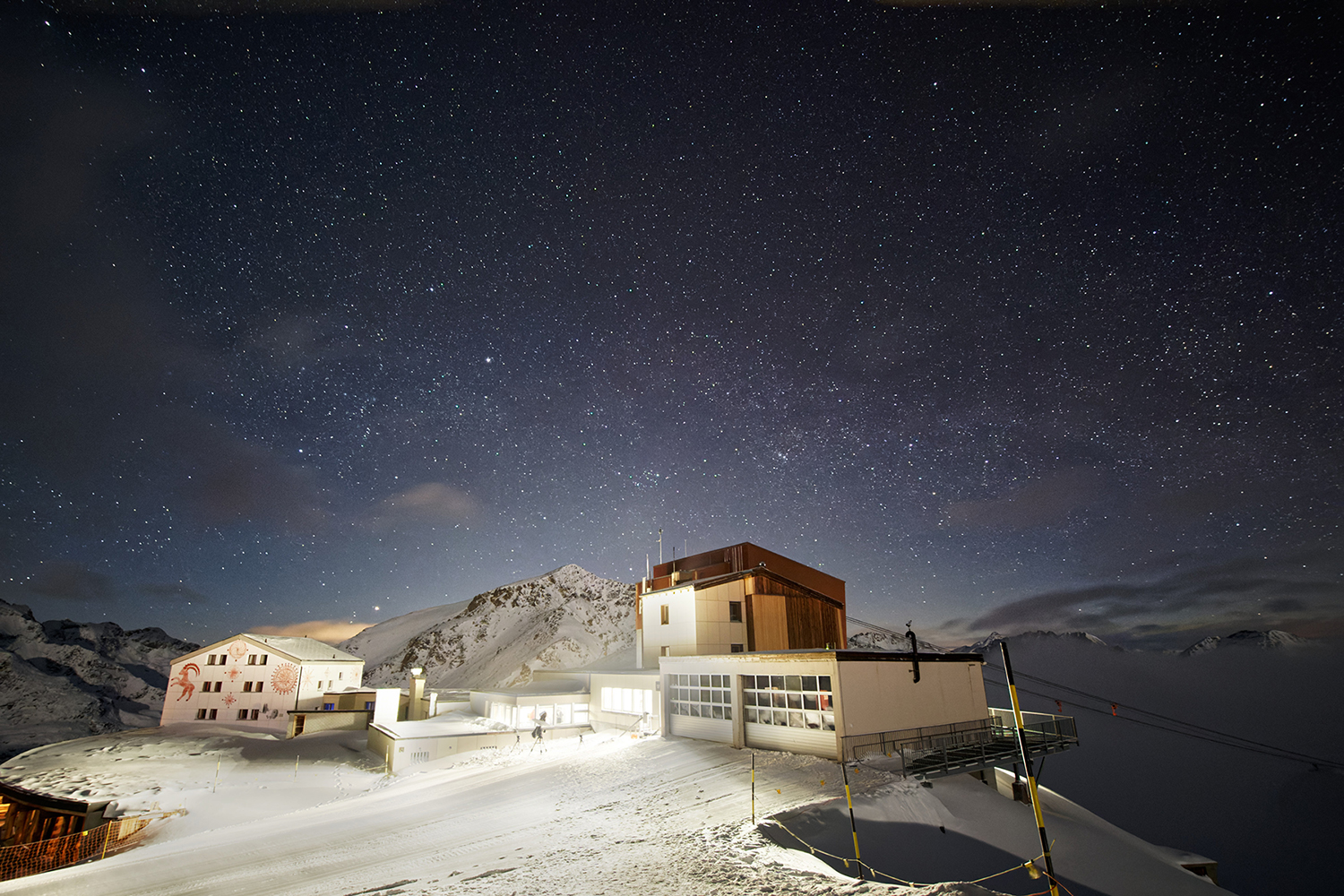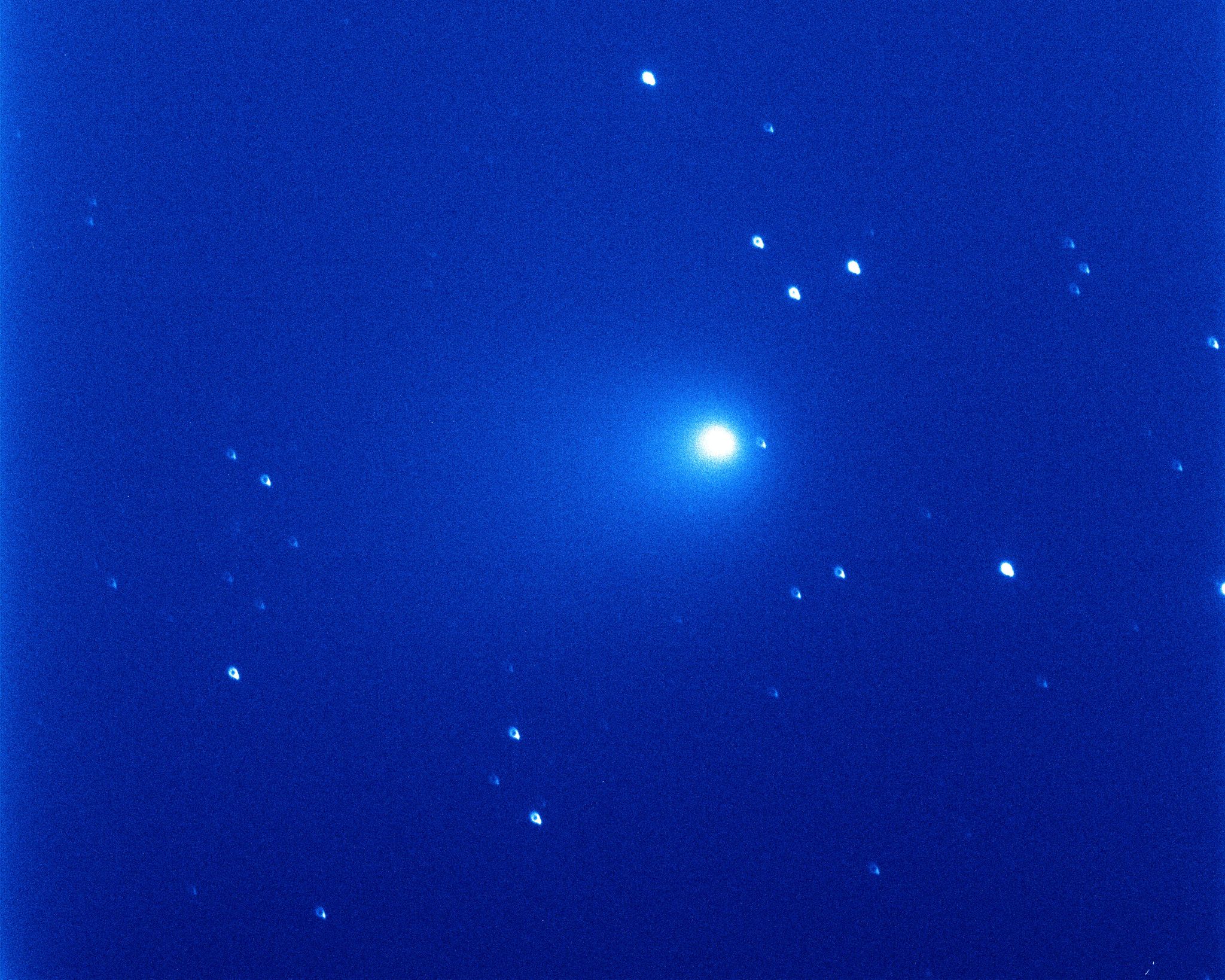Astronomy at high altitude - a short reportage of the 50th Astrowoche
Every year, during the winter semester holidays, the Institute for Partice Physics and Astrophysics organizes a practicum week in observational astronomy (so called Astrowoche) under the supervision of Adrian Glauser.
Is a unique event during which a group of approximately 20 physics students of ETH Zürich spend a week on a summit in the Upper Engadin (2978 meters above sea level) to familiarize with the methods of modern astronomy. This is a well-established tradition, but one that never loses its charm. This year, in fact, almost as if it was to celebrate the 50th edition of this event, the Astrowoche participants were able to carry out their observations under the light of a unique astronomical object: the comet C/2022 E3 ZTF.
It is Monday afternoon, just after four o'clock, and normally at this time, calm begins to reign at the Berghaus Diavolezza. We are situated at 2978 metres above sea level and the place can only be reached by the famous yellow gondola that connects the lift station with the summit of the mountain. Usually at this hour, skiers who had spent the day on the slopes are enjoying the last descent, while those who had climbed to the summit to admire the Morteratsch Glacier are returning home.
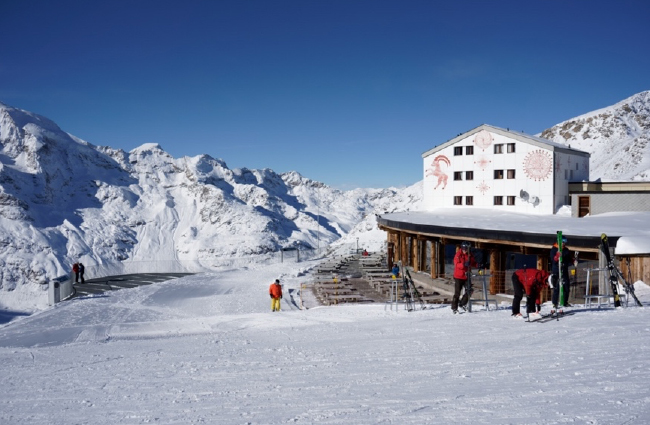
But, on this mid-January day, there is great excitement: for someone a great experience is about to begin. Not far from the arrival of the gondola there are in fact many silver boxes, like small caskets, which contain the latest astronomical instruments. They will allow the participants of the Astrowoche to see the world in a new way through eyepieces, spectra and radio frequencies. The participants, who have just arrived, cannot wait because for them the day has just begun: a long night is about to begin under the careful guidance of
their supervisors. So, is time to open those caskets and get busy: it is necessary to assemble everything because, if there is one thing that one learns immediately during this experience, it is that every moment of clear sky is precious for obtaining the desired measurements. In fact this place is special: nature here is the master. Surrounding us is the Bernina peak, with its height of 4,049 m above sea level, and the Morteratsch glacier, the view is simply incredible.
A variety of different experiment
Everyone has a task, as the participants have been preparing for this experience since November. Six groups have already been formed, each of which will focus on an experiment with a different objective. There are two major distinctions: those who focus on optical tests and those who focus on radio waves. The optical group has six telescopes to place on a nearby hill, which will become the 'measurement base' for the
following days. The research objectives are varied: those who carry out the Stellar Variability experiment are concerned with measuring the variation of pulsating stars and the movement of binary stars system, those who are keen on galaxies can devote themselves to the Galaxy Morphology and Classification experiment, those who wish to discover the chemical composition of stars can devote themselves to obtaining their emission lines with the Stellar Spectroscopy experiment, and finally, for planet enthusiasts, there is the Jupiter experiment, which aims to calculate the mass of the planet, visible in the first hours of darkness, measuring the movement of its Galilean moons. But the variety of experiments does not end there, for those who do not wish to look through the eyepiece, it is possible to carry out one of two radio experiments, 21 cm Galactic Map, with the aim of calculate the percentage of dark matter in the galaxy, and Radio Interferometry. With all this choice, it was difficult for the participants to choose!
It is never too cold to photograph a nebulae
After setting up the equipment and struggling with the first alignments, the search begins. It soon becomes clear that the quote by Sarah Seager, researcher and professor of extrasolar planets at MIT Boston, applies perfectly here: 'Being a scientist is like being an explorer. You have this immense curiosity, this stubbornness, this resolute will that you will go forward no matter what other people say." Under the countless layers of technical clothing, jackets, hats and so on, to survive the frigid temperatures, that can reach minus 30 degrees Celsius at night on the summit, we all feel like explorers in the presence of a cosmic wonder. In the eyes of the participants it is indeed impossible
not to catch that sparkle, that makes an almost smiling silence reign during the night observations, interrupted only by the exclamations of wonder when, after waiting the long exposure times, the image of a marvelous nebulae just captured thanks to the power of the telescope appears on the camera screen. Despite the prohibitive temperatures, some people decide to sit for a moment in the snow and count the marvelous Milky Way looming above us, which unfortunately, due to light pollution, is usually not visible in the city. The amazement is widespread, as is the feeling of being so small compared to that cosmic immensity, which, however, thanks to our measurements, seems
to be ready to make itself known a little closer, fueling our curiosity more and more.
The final presentation
The week proceeds amidst measurements, presentations by the assistants regarding their field of research, data analysis and, above all, pleasure of being together. Once Friday arrives, it is time for the six groups to present their results and share their experience. It is an extremely convivial moment in which the groups share what they have learnt as well as the difficulties they have encountered. The results are good: although the weather forecast was ominous, there was no shortage of clear nights and so we were able to get the results we wanted.
The comet
During this 50th Astrowoche, there was also a special visit: the participants were able to observe the comet C/2022 E3 ZTF with the naked eye and take some pictures of it: a wonderful gift to celebrate this important anniversary.
Photo credits: Ábel Hecker, participant of the Astrowoche.
Author: Mariasole Agazzi, participant in the Astrowoche.

